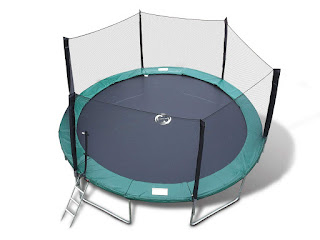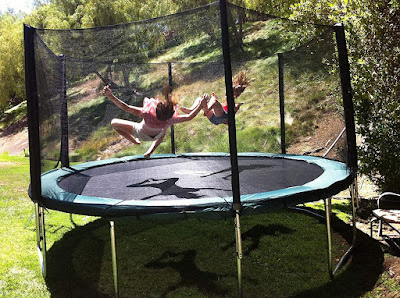Choosing a trampoline is not easy, especially its shape. It is even more difficult for first-time buyers. It’s important to weigh your options before selecting a round trampoline or rectangular one. Your trampoline’s shape plays a crucial role in what works best for you and your family.
The major differences to help make the decision easier
Round Trampoline or Rectangle Trampoline: Consider Usage
- Rectangular trampolines are used by athletes for training. So if your motive for purchasing a trampoline is to benefit a child who has competitive, professional, or Olympic aspirations, a rectangular model works best. A rectangular trampoline provides a higher altitude for jumpers. It can also absorb more force during the landing, which is a plus for athletes in training.
- Round trampolines are ideal for recreation in the back yard or the home. Unlike rectangular models, they don’t accommodate as much weight or force. But if your jumpers are young children or even toddlers, you’ll want to consider the safety aspect and the fact that the reduced spring size diminishes the risk of an injury. Young kids are beginners on a trampoline, and their lack of skill means that round trampoline is better able to accommodate their limitations.
Round Trampoline or Rectangular Trampoline: Consider Safety
- Rectangular Trampoline, the jumper decides where he or she is going to land. With choice, comes risk.
- Round trampoline, on the other hand, are directed to the center of the mat, which is a safer option.
Round Trampoline or Rectangular Trampoline: Size
- The most popular size of a rectangular trampoline is 6 feet by 12 feet. By calculating 1 foot of space on each side of the model for the springs and the frame, you’re left with a 4-foot wide jumping area (two feet on each side) for safe jumping before there’s a risk of landing on the springs or, if there’s no net, falling off the trampoline. Choosing a 7-foot by 14-foot rectangular trampoline only adds half a foot to your jumping space.
- The most popular size for the round trampoline is the 14-foot model, which actually means you have a jumping surface of 12 feet after accommodating the space needed for the springs and the frame. Jumping from the center gives 6 feet of room, which is important for safety.
- The Children’s Hospital of USA recommends that parents choose a round model rather than a rectangular model. This is due to the lower bounce that round trampolines have, which can better protect your young ones from injury.
Round Trampoline Versus Rectangular Trampoline: Consider Price
- The cost of a trampoline depends on a variety of factors. Shape, size, specifications, quality, and material as well as the state in which the trampoline is purchased. Round trampolines tend to be less expensive than rectangular models. Because of the circular shape’s inherent strength, less added support is needed, compared to the rectangular design. Easier to build means less costly, allowing manufacturers to pass the savings on to their customers. Because rectangular trampolines are built for gymnasts, there aren’t as many on the market, which increases the price.
Conclusion:-
- whether you are buying Round Trampoline or Rectangular Trampoline a Safety Enclosure is must for All-Trampoline Shapes.
- Rectangular trampoline is used by athletes. so if you want to buy a trampoline for safety aspects consider round trampoline.













